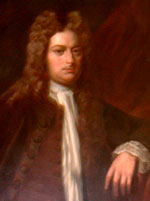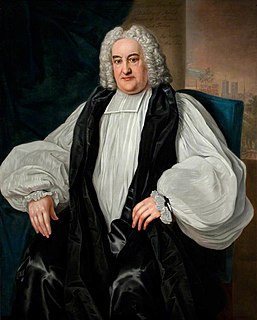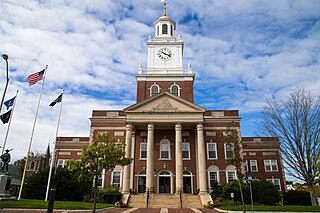John Wentworth may refer to:

Sir John Wentworth, 1st Baronet was the British colonial governor of New Hampshire at the time of the American Revolution. He was later also Lieutenant-Governor of Nova Scotia. He is buried in the crypt of St. Paul's Church (Halifax).
John Wentworth Jr. was a lawyer who served as a delegate to the Continental Congress for New Hampshire and a signer of the Articles of Confederation.

The Dummer's War, was a series of battles between New England and the Wabanaki Confederacy who were allied with New France. The eastern theater of the war was fought primarily along the border between New England and Acadia in Maine, as well as in Nova Scotia; the western theater was fought in northern Massachusetts and Vermont at the border between Canada and New England.

William Dummer was a politician in the Province of Massachusetts Bay. He served as its lieutenant governor for fourteen years (1716–1730), including an extended period from 1723 to 1728 when he acted as governor. He is remembered for his role in leading the colony during what is sometimes called Dummer's War, which was fought between the British colonies of northeastern North America and a loose coalition of native tribes in what is now New Hampshire, Maine, New Brunswick, and Nova Scotia.
New Hampshire is a state located in the New England region of the northeastern United States. New Hampshire was one of the Thirteen Colonies that revolted against British rule in the American Revolution.

William Burnet was a British civil servant and colonial administrator who served as governor of New York and New Jersey (1720–1728) and Massachusetts and New Hampshire (1728–1729). Born into a position of privilege, Burnet was well educated, tutored among others by Isaac Newton.

William Tailer was a military officer and politician in the Province of Massachusetts Bay. Born into the wealthy and influential Stoughton family, he twice married into other politically powerful families. He served as lieutenant governor of the province from 1711 until 1716, and again in the early 1730s. During each of these times he was briefly acting governor. He was a political opponent of Governor Joseph Dudley, and was a supporter of a land bank proposal intended to address the province's currency problems. During his first tenure as acting governor he authorized the erection of Boston Light, the earliest lighthouse in what is now the United States.
Captain Thomas Wiggin (1601-1666)), often known as Governor Thomas Wiggin, was the first governor of the Upper Plantation of New Hampshire, a settlement that later became part of the Province of New Hampshire in 1679. He was the founder of Stratham, Rockingham, New Hampshire, which celebrated its 300th anniversary of incorporation in 2016. The son of a vicar in the Church of England with family ties to important and influential families of the era. A highly respected man in his own right who would leave his stamp on what would become American values.

John Hoadly (1678–1746) was an Anglican divine in the Church of Ireland. He served as Bishop of Ferns and Leighlin, as Archbishop of Dublin, and as Archbishop of Armagh from 1742 until his death.

George Vaughan may be best known for being Lieutenant Governor of the Province of New Hampshire for only one year. A graduate of Harvard College in 1696, he was also at various times a merchant, colonel of militia, agent for the province to England, and counsellor.

Richard Waldron (1694-1753) was a major opponent of the Wentworth oligarchy in colonial New Hampshire. He supported a continued political subordination of New Hampshire to Massachusetts and opposed moves to separation from this traditional senior partner. Through his friendship with Massachusetts governor and kinsman Jonathan Belcher and his positions of Secretary, Councillor, and New Hampshire assembly speaker, for a time he was "the central authority" in colonial New Hampshire politics.
David Dunbar was a British military officer, a surveyor of the King's woods in North America, and lieutenant governor of the Province of New Hampshire. Of Scotch-Irish origin, Dunbar married into a wealthy and politically influential family, and received his first North American appointment, that of Surveyor of the King's Woods, in 1728, through the influence of his family connections and that of Martin Bladen, a member of the Board of Trade. In this position he made numerous local enemies in his enforcement of regulations governing the cutting of trees that could be used as ship masts. He was the leader of an attempt to establish a colony named "Georgia" in what is now the central coast of Maine, and was in 1730 commissioned as lieutenant governor of the Province of New Hampshire in an attempt to strengthen his authority. He engaged in frequent disputes with New Hampshire's Governor Jonathan Belcher. He established Fort Frederick in Maine.
Wentworth is a surname which may refer to:

















